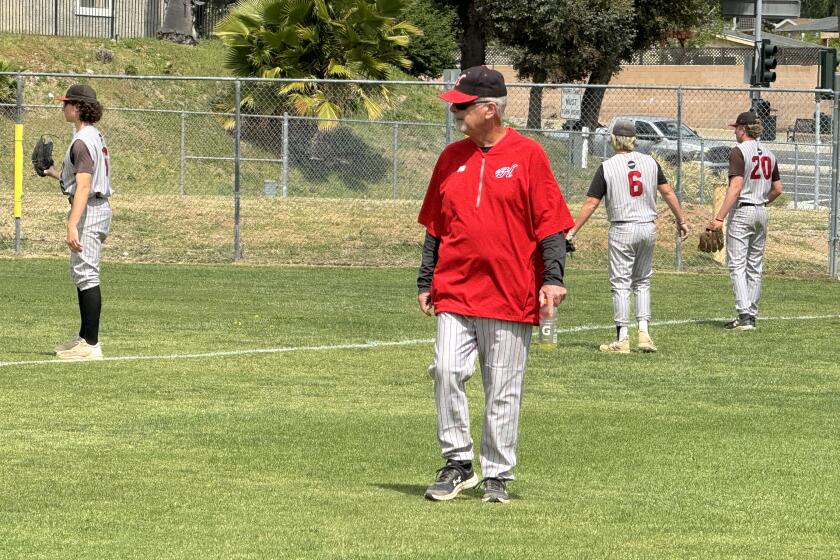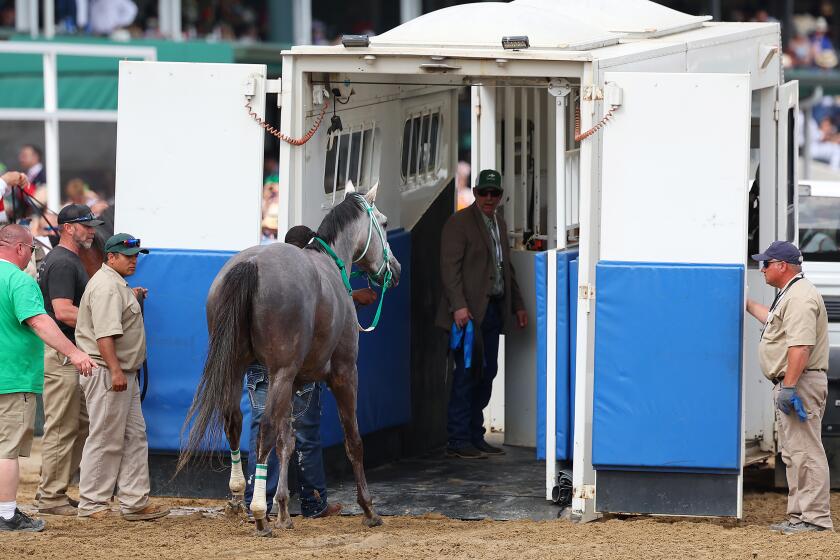Germans turn to analytics as they try to get the edge in Olympic sailing
The only Summer Olympics Toni Wilhelm did not participate in during the last 12 years were in China in 2008, and the German sailor watched those proceedings from afar.
One problem: He got bored.
“Even me, being a sailor, sailing was not very interesting,” he said. “I remember watching when I didn’t qualify in 2008, I had to sit home at my girlfriend’s place. Sometimes I found myself falling asleep.”
Wilhelm, callingfrom his home base in Lausanne, Switzerland, chuckled at that long-ago memory as he was preparing to travel to Rio de Janeiro for additional training sessions for the upcoming Olympics.
Viewing sailing on TV — or a computer screen — no longer is a reliable sleep aid.
The German software giant SAP worked in close collaboration with Sailing Team Germany to develop SAP Sailing Analytics, using analytic tools, putting GPS trackers and sensors on boats and the courses.
Real-time data, such as wind speed and ocean currents, not only provided quicker feedback to the sailors but helped fans get a better and more accurate sense of the back-and-forth drama on the water.
Several factors helped spark the high-tech association. German sailing had been slipping at the Olympic level, the slide starting after it won two silvers and one bronze in Sydney in 2000, and there has been only one medal collected since then, a bronze at the Beijing Olympics in 2008.
Team Germany was kept off the podium in 2012, although Wilhelm, a windsurfer, lost the bronze by a narrow margin on the final day of the competition, finishing fourth.
“It was time something needed to change … to bring Germany back to the top,” said two-time Olympian Marcus Baur, head of research and development at Sailing Team Germany.
It made sense on multiple levels. SAP co-founder and Chairman Hasso Plattner, the billionaire owner of the San Jose Sharks, is a passionate sailor. He once famously said: “I did not moon [Oracle corporate rival] Larry Ellison,” attempting to dispel an old yachting story.
SAP has its hand in tennis, using the in-memory database SAP Hana to provide coaches at Women’s Tennis Assn. events with real-time analytics during matches. Milan Cerny, senior business intelligence consultant at SAP, is heavily involved in the sailing effort and has worked closely with the German Ice Hockey Federation and the Swiss Ice Hockey Federation, focusing on fan engagement.
Baur has sought to pull in the “normal people, like your aunt and granny,” and found the company was able to make “the story come alive” with its coverage of the 49er and 49erFX World Championships in Clearwater, Fla., in February.
“It makes people who have nothing to do with sailing have the sense of what is really going on,” said the veteran Wilhelm, now 33, who will be competing in his third Olympics. He is coming off a victory earlier this month at Weymouth and Portland in England.
“You can see in terms of distances between competitors, about leads, about sailing angles, about positioning…. Analytics really explains why those things are happening and how they are happening.”
Sailing is light years ahead of where it was in 2004.
“There’s no comparison with my first Olympics to what we are having now …[before] we tried to analyze a little bit with really [lousy] cameras,” he said. “I’ve had some major technical changes in the past year, especially in light wind.
“If you see what you are doing wrong right away — within seconds — that changes your life.”
The Olympics-bound duo Anika Lorenz and Victoria Jurczok, who will be competing in the 49er FX class, said the technology has helped them communicate more effectively with their coaches and each other, adding that it was just as important to learn what not to say to each other during competition.
The biggest test for the analytics team will be the often demanding, rapidly changing conditions at the Olympic sailing venue, Marina de Gloria in Guanabara Bay. They used the tidal software designed for the Olympics in Brazil to model the currents at the world championships in Santander, Spain, in 2014.
They’ve learned from their mistakes. In Spain, the tidal model suggested a 20-second advantage on one side of the course, but one of their sailors opted to go to the other side and lost his shot at a silver medal, Baur recalled. In this case, the model had been accurate.
“The learning here was that you have to build both,” Baur said. “You have to build good models and you have to build trust in the models. And you have to make people understand when the models are good and when they’re bad. That was a really valuable learning for Rio.
“We think — we hope — it’s going to make a difference in winning a medal and people will believe in the models at the right time.”
Twitter: @reallisa
More to Read
Get our high school sports newsletter
Prep Rally is devoted to the SoCal high school sports experience, bringing you scores, stories and a behind-the-scenes look at what makes prep sports so popular.
You may occasionally receive promotional content from the Los Angeles Times.







